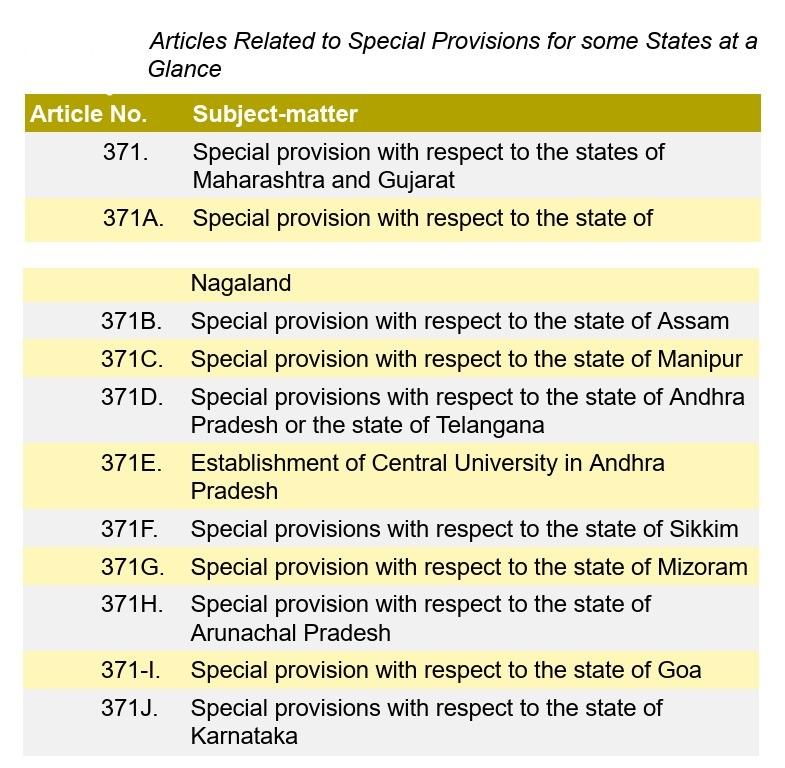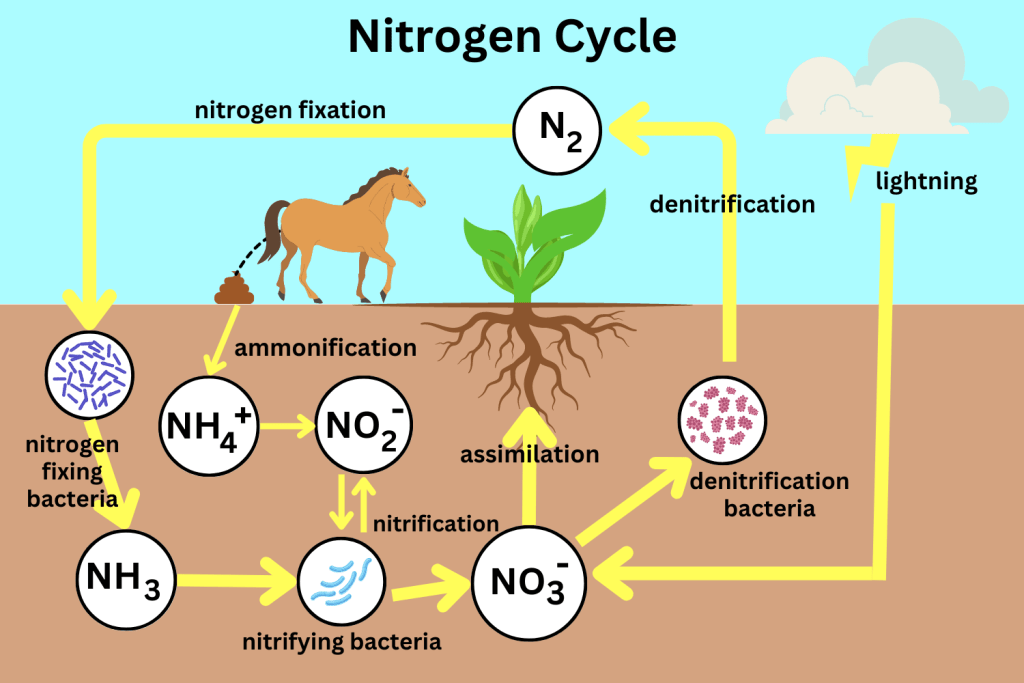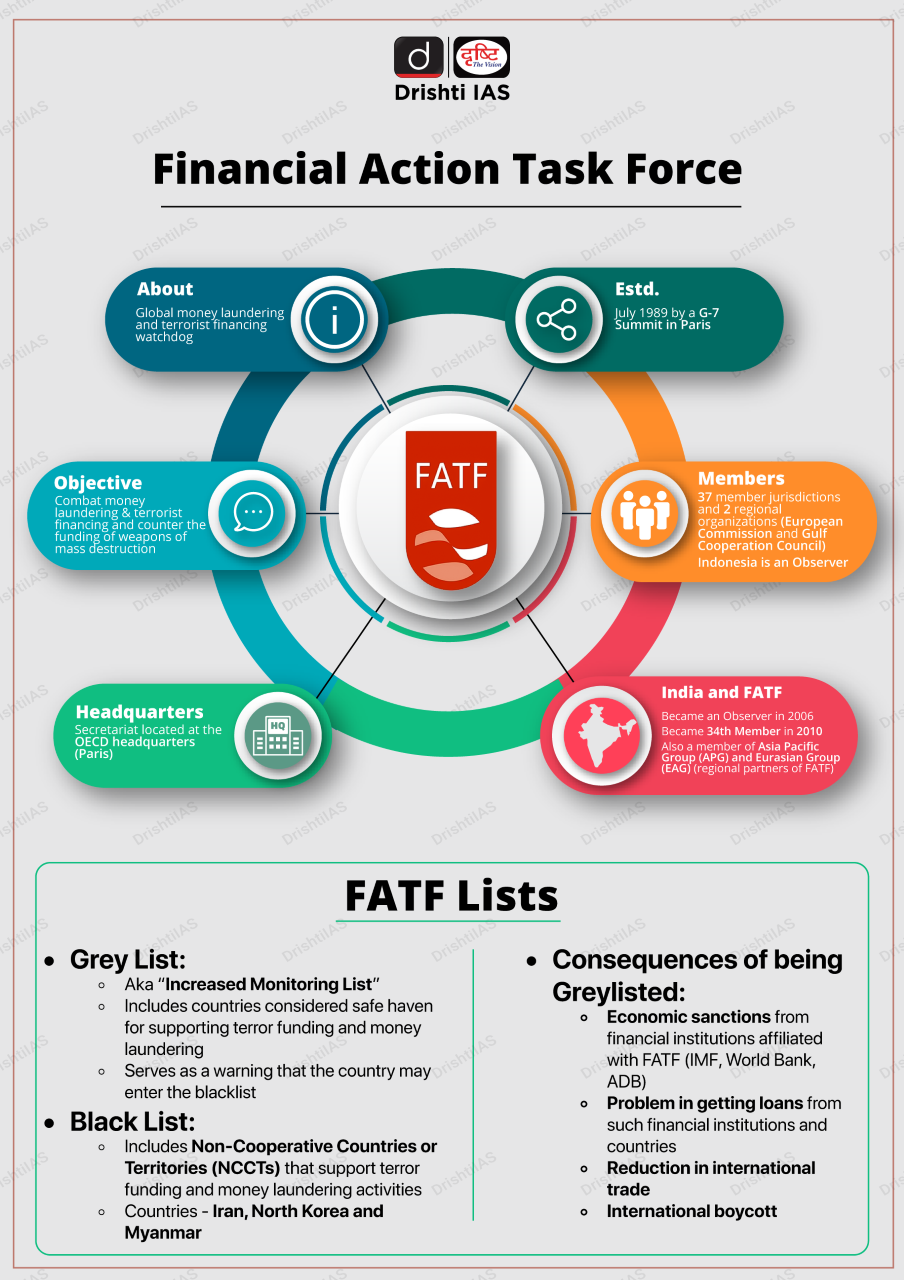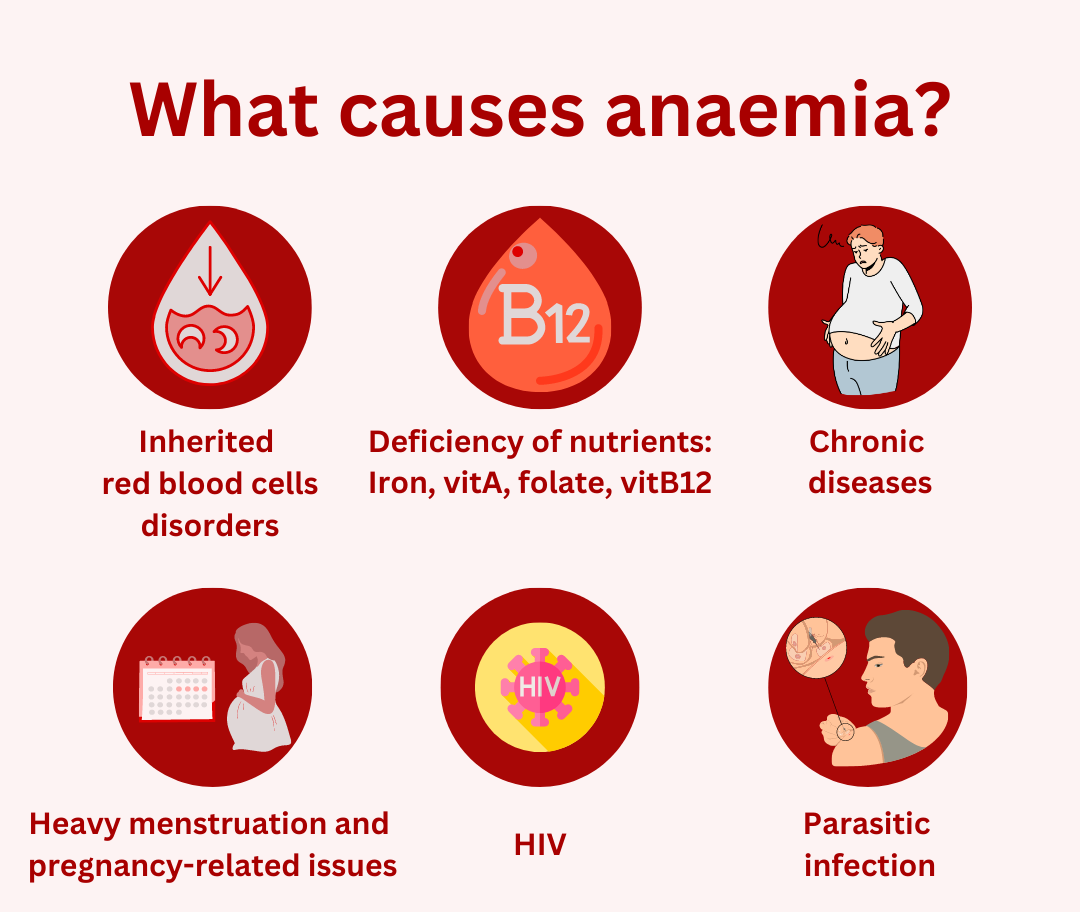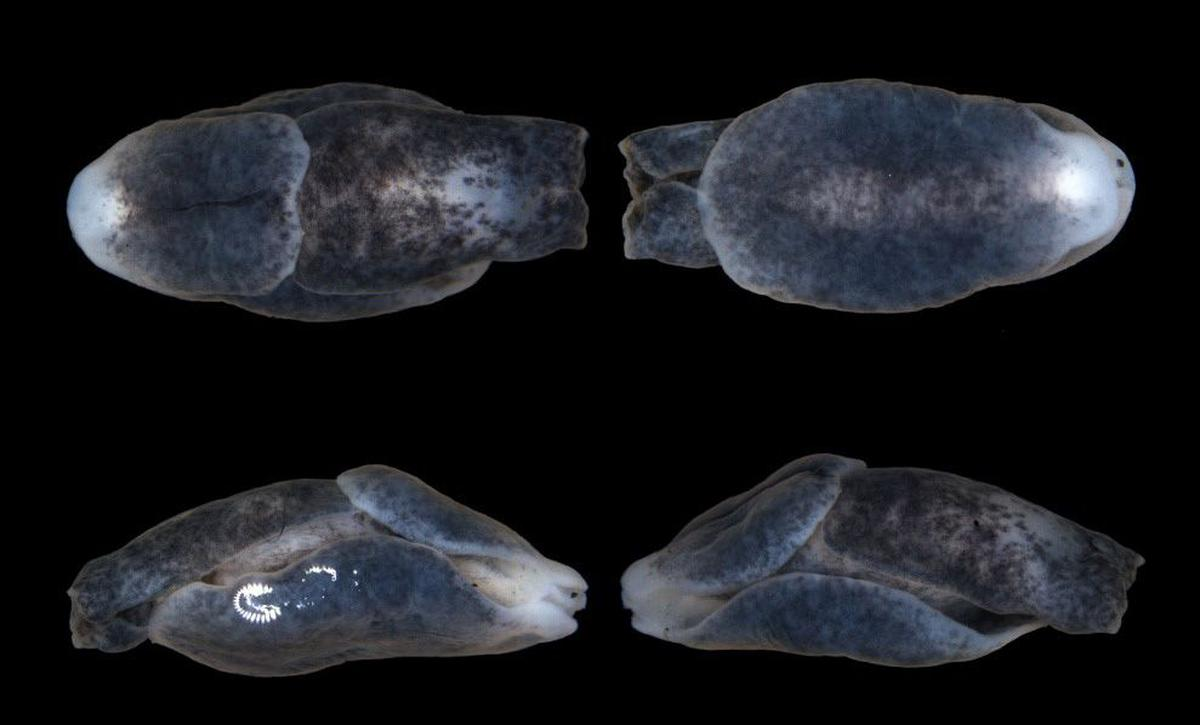Sustainable Funding for Research and Development
For Prelims: Sustainable Funding for Science, Raman Effect, Nobel Prize in Physics, GDP (Gross Domestic Product)
For Mains: Sustainable Funding for Science, Government Policies & Interventions, Growth & Development.
Why in News?
National Science Day, celebrated annually on 28th February, honours the discovery of the Raman Effect and acknowledges scientists' contributions to India's development.
- It highlights the importance of Science in Fostering Sustainable Development.
What is National Science Day?
- About:
- National Science Day is observed on the day Indian Physicist Chandrasekhara Venkata Raman discovered the Raman Effect.
- The Raman Effect is the phenomenon where light gets scattered when passed through a transparent material, leading to changes in wavelength and energy.
- In 1928, on 28th February CV Raman discovered the Raman Effect.
- He also received the Nobel Prize in Physics in 1930 due to his significant contribution to the field of Physics.
- National Science Day is observed on the day Indian Physicist Chandrasekhara Venkata Raman discovered the Raman Effect.
- Theme: Indigenous Technologies for Viksit Bharat
- Significance:
- The day is observed to raise awareness about the importance of scientific applications in our daily lives.
- The day also aims to celebrate and acknowledge the efforts and achievements of scientists in human welfare.
- The best way to observe National Science Day is by understanding the way science and technology have progressed and exploring the spaces where more efforts need to be made.
How much is India Spending on Research and Development (R&D)?
- India’s Declined R&D Expenditure:
- India's expenditure on Research and Development (R&D) has declined to 0.64% in 2020-21 of GDP (Gross Domestic Product), down from 0.8% in 2008-2009 and 0.7% in 2017-2018.
- This decrease is concerning, especially considering repeated calls from government agencies to double R&D spending.
- The 2013 Science, Technology, and Innovation Policy aimed to increase Gross Expenditure on R&D (GERD) to 2% of GDP, a goal reiterated in the 2017-2018 Economic Survey.
- However, the reasons for the reduction in R&D spending are unclear. Potential factors may include insufficient coordination among government agencies and a lack of strong political will to prioritise R&D expenses.
- India's expenditure on Research and Development (R&D) has declined to 0.64% in 2020-21 of GDP (Gross Domestic Product), down from 0.8% in 2008-2009 and 0.7% in 2017-2018.
- Developed Countries’ R&D Expenditure:
- Comparatively, most developed countries allocate between 2% and 4% of their GDPs to R&D.
- In 2021, Organisation for Economic Co-operation and Development (OECD) member-countries averaged 2.7% of GDP on R&D, with the U.S. and the U.K. consistently exceeding 2% over the past decade.
- To drive meaningful development through science, experts advocate for India to allocate at least 1%, ideally 3%, of its GDP annually to R&D until 2047.
.png) |
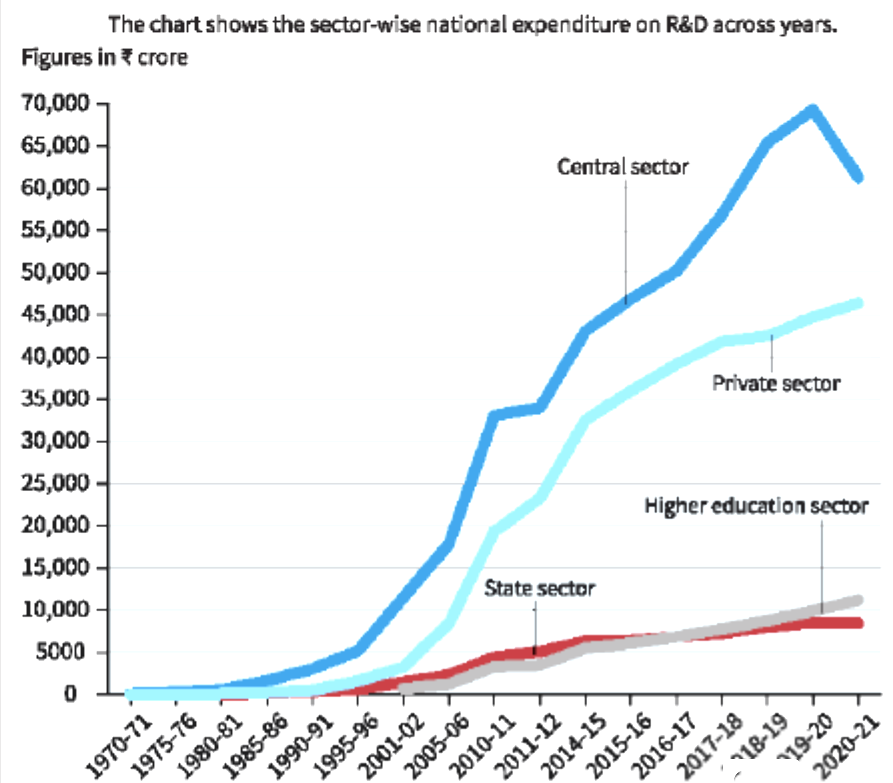 |
What are the Challenges in Sustainable Funding for R&D?
- Under-utilisation of Budgets:
- Despite allocations, departments such as the Department of Biotechnology (DBT), Department of Science and Technology (DST), and Department of Scientific and Industrial Research (DSIR) have consistently under-utilised their budget allocations.
- In 2022-2023, DBT used only 72% of its estimated budget allocation, DST used only 61%, and DSIR spent 69% of its allocation.
- Despite allocations, departments such as the Department of Biotechnology (DBT), Department of Science and Technology (DST), and Department of Scientific and Industrial Research (DSIR) have consistently under-utilised their budget allocations.
- Delays in Disbursements:
- The lack of capacity also results in delays in grant and salary disbursements, impacting the progress of scientific research and development projects.
- The broader issue of India's under-spending on research and development exacerbates the impact of under-utilization, indicating a need for both increased funding and improved efficiency in spending.
- Uncertain Government Budget Allocation:
- Government funding for science is uncertain and subject to changes in political priorities, economic conditions, and competing demands for resources across various sectors.
- Non-prioritisation of R&D funding within government budgets, leading to insufficient allocations compared to other sectors.
- This could be due to a lack of recognition of the importance of scientific research for national development and innovation.
- Insufficient Private Sector Investment:
- In 2020-2021, the private sector industry contributed 36.4% of the GERD whereas the Union government’s share was 43.7%.
- In economically developed countries, a major share (70% on average) of R&D investment comes from the private sector.
- The hesitancy of private-sector funding may be because of the poor capacity to evaluate R&D in India, ambiguous regulatory roadmaps that can deter investors, lack of clear exit options for investors in sectors such as biotechnology, and fears of intellectual property rights theft.
- In 2020-2021, the private sector industry contributed 36.4% of the GERD whereas the Union government’s share was 43.7%.
How can India Improve Its R&D Spending?
- Consistent Investment:
- Science requires consistent, large-scale investment to bear fruit. For India to reach ‘developed nation’ status, it needs to spend more to scale R&D than developed countries spend to maintain that status.
- Philanthropic Funding:
- Encouraging wealthy individuals, corporations, and foundations to invest in R&D through philanthropy can significantly boost funding.
- Establishing dedicated funds or grants for scientific research can attract donations from those interested in contributing to societal progress.
- Industry-Academic Collaboration:
- Facilitating partnerships between academia and industry can leverage resources and expertise from both sectors.
- Industry can provide funding, equipment, and real-world problems for research, while academic institutions offer scientific knowledge and talent. Government incentives or tax breaks can incentivise such collaborations.
- Venture Capital and Angel Investors:
- Encouraging venture capital firms and angel investors to invest in R&D projects with high potential for commercialisation can provide a significant source of funding.
- Startups and small enterprises often drive innovation and can benefit from private investment to scale their research efforts.
- Government Initiatives:
- It is important to accelerate the implementation of initiatives like the Anusandhan National Research Foundation, ensuring adequate funding and efficient utilization to support R&D activities.
What are the Government Initiatives related to R&D?
- Development of Centres of Excellence.
- Creation of National Research Foundation
- VAIBHAV Fellowship
- Global Innovation Index 2023: India secured the 40th position in the latest GII 2023.
- Atal New India Challenge 2.0
- Announcement of New Science Awards (Vigyan Yuva-Shanti Swarup Bhatnagar).
- Post-Doctoral Fellowships (PDFs): The government has increased the number of Post-Doctoral Fellowships (PDFs) from 300 annually to 1000.
- In addition, the SERB-Ramanujan Fellowship, SERB-Ramalingaswami re-entry Fellowship and SERB-Visiting Advanced Joint Research Faculty Scheme (VAJRA) have been devised to promote brain gain by attracting bright researchers of Indian origin to work and contribute to STI (science, technology and innovation) ecosystem in India.
Conclusion
- Addressing challenges related to sustainable funding for science requires coordinated efforts from government agencies, policymakers, research institutions, and the private sector to streamline funding mechanisms, improve capacity-building initiatives, and foster a culture of innovation and research excellence.
- Additionally, there needs to be a sustained commitment to prioritizing science funding and recognizing its critical role in driving socioeconomic development and addressing global challenges.
UPSC Civil Services Examination Previous Year Question (PYQ)
Prelims:
Q.1 Which of the following statements is/are correct regarding National Innovation Foundation-India (NIF)? (2015)
- NIF is an autonomous body of the Department of Science and Technology under the Central Government.
- NIF is an initiative to strengthen the highly advanced scientific research in India’s premier scientific institutions in collaboration with highly advanced foreign scientific institutions.
Select the correct answer using the code given below:
(a) 1 only
(b) 2 only
(c) Both 1 and 2
(d) Neither 1 nor 2
Ans: (a)
Q.2 For outstanding contribution to which one of the following fields is Shanti Swarup Bhatnagar Prize given? (2009)
(a) Literature
(b) Performing Arts
(c) Science
(d) Social Service
Ans: (c)
Q.3 Atal Innovation Mission is set up under the (2019)
(a) Department of Science and Technology
(b) Ministry of Labour and Employment
(c) NITI Aayog
(d) Ministry of Skill Development and Entrepreneurship
Ans: (c)
Mains:
Q. Why is Public Private Partnership (PPP) required in infrastructural projects? Examine the role of PPP model in the redevelopment of Railway Stations in India. (2022)
Q. Examine the development of Airports in India through joint ventures under Public–Private Partnership (PPP) model. What are the challenges faced by the authorities in this regard? (2017)
Article 371A and Its Impact on Coal Mining in Nagaland
For Prelims: Article 371A , Rat-Hole Mining, Coal
For Mains: Article 371A limitations and challenges, Sustainable mining practices, Government Policies & Interventions
Why in News?
In Nagaland, Article 371A of the Indian Constitution poses a major obstacle to regulating coal mining. This provision, upholding Naga customary law, complicates government efforts to oversee small-scale mining, especially after recent fatalities in a rat-hole mine explosion.
What is Article 371A of the Indian Constitution?
- Article 371A was introduced into the Constitution (Part XXI) as part of the 13th Amendment in 1962, granting special provisions to Nagaland (then Naga Hills and Tuensang Area).
- Article 371A states that no act of Parliament shall apply to Nagaland in respect of the religious or social practices of the Nagas, the Naga customary law and procedure, the administration of civil and criminal justice involving decisions according to the Naga customary law, and the ownership and transfer of land and its resources, unless the Nagaland Legislative Assembly decides otherwise by a resolution.
- This means that the state government has limited authority and jurisdiction over the land and its resources, which are owned and controlled by the local communities and governed by their customary laws and practices.
How is Rat-Hole Mining Regulated in Nagaland?
- Coal Mining in Nagaland:
- Nagaland possesses significant coal reserves totalling 492.68 million tonnes, but dispersed erratically and inconsistently in small pockets spread over a large area.
- The Nagaland Coal mining policy, established in 2006, permits rat-hole mining due to the scattered nature of coal deposits, making large-scale operations unfeasible.
- Rat-hole mining is a method of extracting coal from narrow horizontal tunnels or rat-holes, which are often dug by hand and are prone to accidents and environmental hazards.
- Rat-hole mining licences, known as small pocket deposit licences, are exclusively granted to individual landowners for limited durations and specific conditions.
- According to Section 6.4(ii) of the Nagaland Coal Policy (First Amendment) of 2014, these licences are restricted to mining areas not exceeding 2 hectares, with an annual coal production cap of 1,000 tonnes and a prohibition on heavy machinery usage.
- Rat-hole mining operations necessitate consent from relevant departments, including Forest and Environment, ensuring compliance with environmental regulations.
- Despite proper clearances and defined mining plans issued by the State government, instances of illegal rat-hole mining persist in Nagaland.
- The dependence of local communities on coal mining for sustenance further complicates regulatory efforts, as stringent regulations may impact livelihoods, necessitating a delicate balance between economic interests and environmental concerns.
- Article 371A and Controlling Rat-Hole Mining in Nagaland:
- This Article 371A grants Nagaland special rights over its land and resources, making it difficult for the governments to impose regulations that might be perceived as infringing on these rights.
- The Nagaland government struggles to effectively regulate small-scale mining operations, particularly those practised by individual landowners due to the limitations posed by Article 371A.
- The recent deaths in a rat-hole mine highlight the safety risks associated with unregulated mining practices. These incidents raise concerns about the lack of proper safety measures and highlight the urgency for effective regulations.
Note
- The Supreme Court and National Green Tribunal (NGT), banned rat hole mining in 2014 as it causes environmental degradation and is a threat to the life of miners. The Tribunal termed it as unscientific.
Way Forward
- Enhance monitoring and enforcement measures to crack down on illegal mining activities, including increased surveillance, inspections, and penalties for violators.
- Conduct outreach programs to educate local communities about the adverse effects of unregulated mining, emphasizing the importance of compliance with safety and environmental standards.
- Foster collaboration between government agencies, local communities, mining license holders, and environmental organizations to develop comprehensive strategies for sustainable and responsible mining practices.
Read more: Rat-Hole Mining
UPSC Civil Services Examination, Previous Year Question (PYQ)
Q. “In spite of adverse environmental impact, coal mining is still inevitable for development”. Discuss. (2017)
Nitrogen Pollution
For Prelims: Nitrogen pollution, UNEP, Nitrogen-based fertiliser, Ammonia, Air pollution, Methemoglobinemia, Stratospheric ozone layer, Eutrophication
For Mains: Sources of Nitrogen Pollution, Major Impacts of Nitrogen Pollution, Major Compounds of Nitrogen and their effects.
Why in News?
Recent research has stated that by 2050, one-third of global river sub-basins are projected to face severe scarcity of clean water due to nitrogen pollution.
What is Nitrogen Pollution?
- About: Nitrogen pollution refers to the excessive presence of nitrogen compounds in the environment, primarily in water bodies like rivers and lakes.
- According to the United Nations Environment Programme (UNEP), each year, 200 million tonnes of reactive nitrogen, 80% of the total, is lost to the environment.
- One of the main drivers of nitrogen pollution has been the rising consumption of nitrogen-based fertiliser, which doubled between 1978 and 2014 globally.
- The amount of reactive nitrogen produced by humans is now greater than the amount created through natural processes.
- Sources of Nitrogen Pollution:
- Agricultural Activities: One of the main drivers of nitrogen pollution has been the rising consumption of nitrogen-based fertilizer, which can leach into groundwater or runoff into surface water bodies.
- Industrial Processes: Manufacturing processes, particularly those involved in the production of nitrogen-based chemicals and fertilisers, release nitrogen compounds into the environment.
- Combustion of fossil fuels in industries also emits nitrogen oxides (NOx) into the atmosphere.
- Livestock Farming: Livestock waste, primarily from manure and urine, contains nitrogen compounds such as ammonia.
- Improper storage and management of livestock waste can lead to nitrogen runoff, contaminating water bodies and contributing to eutrophication.
- The livestock sector currently emits 65 teragrams (Tg) of nitrogen per year, equivalent to one-third of current human-induced nitrogen emissions.
- Biomass Burning: Wildfires and burning of cow dung cake as a fuel release nitrogen oxides (NOx) and nitrous oxide (N2O) into the atmosphere.
- These emissions contribute to air pollution and can have regional and global impacts on atmospheric chemistry and climate.
- Major Impacts of Nitrogen Pollution:
- Eutrophication: Excess nitrogen acts as a nutrient fertiliser for aquatic plants, leading to excessive growth of algae and other aquatic vegetation. This phenomenon is known as eutrophication and leads to algal blooming.
- This creates oxygen-depleted zones (dead zones), where aquatic life suffocates and dies.
- Human Health Impacts: Nitrogen pollution can have direct and indirect effects on human health.
- High levels of nitrogen dioxide (NO2) in the air can exacerbate respiratory conditions such as asthma and increase the risk of respiratory infections.
- An estimated 77% of people breathe annual average concentrations of nitrogen dioxide beyond safe levels.
- Nitrate contamination of drinking water can also pose health risks, particularly to infants, by causing methemoglobinemia or "blue baby syndrome."
- High levels of nitrogen dioxide (NO2) in the air can exacerbate respiratory conditions such as asthma and increase the risk of respiratory infections.
- Ozone Depletion: Nitrous oxide (N2O) released into the atmosphere can lead to the depletion of the stratospheric ozone layer, which protects the Earth from harmful ultraviolet (UV) radiation.
- Depletion of the ozone layer can increase the risk of skin cancer, cataracts, and other health problems in humans, as well as harm marine ecosystems and agricultural crops.
- It also leads to the creation of tropospheric ozone which creates respiratory illnesses.
- Eutrophication: Excess nitrogen acts as a nutrient fertiliser for aquatic plants, leading to excessive growth of algae and other aquatic vegetation. This phenomenon is known as eutrophication and leads to algal blooming.
- Related Government Initiatives:
- Bharat Stage (BS VI) Emission Standards: Stricter emission standards for vehicles and industries aim to curb the release of nitrogen oxides and particulate matter, which are precursors to air and water pollution.
- Nutrient-Based Subsidy (NBS): This policy incentivizes the use of controlled-release fertilisers, encouraging more efficient nutrient management.
- Soil Health Cards: Issued to farmers, these cards provide soil nutrient status and customised fertiliser recommendations, promoting balanced nutrient application.
- Nano Urea: It is a fertiliser patented and sold by the Indian Farmers Fertiliser Cooperative Limited (IFFCO), and has been approved by the government for commercial use.
- Nano urea reduces the unbalanced and indiscriminate use of conventional urea and increases crop productivity.
Note
In March 2019, the United Nations Environment Assembly adopted a resolution calling for sustainable nitrogen management.
What are the Key Points Related to Nitrogen?
- About: Nitrogen is the most prevalent element in living organisms. It is a constituent of amino acids, proteins, hormones, chlorophylls, and many vitamins.
- There is an inexhaustible supply of nitrogen (N2) in the atmosphere, but most living organisms cannot use the elemental form directly.
- Nitrogen must be ‘fixed’ (converted to ammonia, nitrites, or nitrates) before plants can take it up.
- Nitrogen Fixation: Nitrogen fixation on earth is accomplished in three different ways:
- By N-fixing microbes (bacteria and blue-green algae)
- By industrial processes (fertilizer factories)
- To a limited extent by atmospheric lighting.
- Major Compounds of Nitrogen:
| Compound | Source | Benefits | Effects |
| Nitrous Oxide (N20) | Agriculture, industry, combustion | Used in rocket propellants. Used in medical procedures as laughing gas. |
As a Greenhouse gas, 300 times more potent than carbon dioxide - Causes depletion of the stratospheric ozone layer, which shields humanity from harmful ultraviolet radiation |
| Di-Nitrogen (N2) | Makes up 78% of the air we breathe | Maintains a stable atmosphere for life on Earth | Harmless and chemically unreactive |
| Ammonia (NH3) | Manure, urine, fertilisers, biomass burning | Foundation for amino acids, proteins, and enzymes- Commonly used as fertiliser | Causes eutrophication and affects biodiversity, Forms particulate matter in the air, affecting health by causing shortness of breath, affecting lung function, and exacerbating respiratory diseases such as asthma |
| Nitrate (NO3) | Wastewater, agriculture, oxidation of NOx | Widely used in fertilisers and explosives | Forms particulate matter in the air and affects health when ending up in groundwater, causing what's known as blue baby syndrome, Leads to eutrophication in water bodies |
| Nitric Oxide and Nitrogen Dioxide | Combustion from transport, industry, energy sector | Essential in human physiology (NO) | Major air pollutant, contributing to heart disease and respiratory illness |
Way Forward
- Sustainable Agricultural Practices: Implementing techniques like precision agriculture (applying the right amount of fertiliser in the right place) and cover cropping (planting vegetation during off-seasons to prevent soil erosion and nutrient runoff) can help minimize fertiliser use and reduce pollution.
- Improved Wastewater Treatment: Upgrading and expanding wastewater treatment infrastructure ensures proper treatment and disposal of industrial and urban sewage, preventing nitrogen-rich compounds from entering water bodies.
- Incentivizing Green Infrastructure: Offering incentives and subsidies for the implementation of green infrastructure projects, such as green roofs, rain gardens, and permeable pavements, which help mitigate nitrogen runoff by absorbing and filtering stormwater.
- Enhancing Public Awareness: Raising awareness about responsible water and nitrogen management practices amongst farmers, industrial operators, and the general public is crucial to promoting sustainable practices and reduce pollution.
UPSC Civil Services Examination, Previous Year Question:
Q. Which of the following add/adds nitrogen to the soil? (2013)
- Excretion of urea by animals
- Burning of coal by man
- Death of vegetation
Select the correct answer using the codes given below:
(a) 1 only
(b) 2 and 3 only
(c) 1 and 3 only
(d) 1, 2 and 3
Ans: (c)
Q. Which one of the following sets of elements was primarily responsible for the origin of life on the Earth? (2012)
(a) Hydrogen, Oxygen, Sodium
(b) Carbon, Hydrogen, Nitrogen
(c) Oxygen, Calcium, Phosphorus
(d) Carbon, Hydrogen, Potassium
Ans: (b)
Q. Which feature of some species of blue-green algae helps promote them as bio-fertilizers? (2010)
(a) They convert atmospheric methane into ammonia which the crop plants can absorb readily
(b) They induce the crop plants to produce the enzymes which help convert atmospheric nitrogen to nitrates
(c) They have the mechanism to convert atmospheric nitrogen into a form that the crop plants can absorb readily
(d) They induce the roots of the crop plants to absorb the soil nitrates in larger quantities
Ans: (c)
Mains:
Q. Sikkim is the first ‘Organic State’ in India. What are the ecological and economical benefits of Organic State? (2018)
Leap Year
Why in News?
In 2024, February 29th marks Leap Day, an additional day added to the calendar during leap years. This extra day, known as Leap Year Day, extends the year to a total of 366 days.
What is a leap year?
- Leap Year:
- A leap year has 366 days in a year as opposed to the regular 365 days. The extra day is added to February, the shortest month of the year, as February 29.
- A solar calendar signifies one complete orbit of the Earth around the Sun. The Earth's orbit takes about 365 days, 5 hours, 48 minutes, and 46 seconds to simplify, a regular year is rounded to 365 days.
- To account for the extra time, rounded up to six hours, 24 hours (one full day) are added to every fourth year.
- Without leap years, the calendar would become out of sync with the seasons over time.
- The extra day keeps calendars and seasons from gradually falling out of sync and impacting harvesting, planting and other cycles based on the seasons.
- Evolution of Leap Years:
- The Julian calendar's approximation of the solar year led to accumulating errors over time, primarily due to a slight overcompensation.
- By the 16th century, the calendar was approximately 10 days ahead of the solar year, prompting the need for reform.
- Pope Gregory XIII initiated calendar reform in 1582, removing ten days to realign the calendar with the solar year.
- To prevent future errors, the Gregorian calendar introduced a refined leap year rule, omitting three leap years every 400 years.
- Math of Leap Year:
- Leap years are always multiples of four like 2016, 2020, 2024, but a year that is a multiple of four is not always a leap year.
- The Gregorian leap year rule states that the year number must be divisible by four, except for end-of-century years (ending in '00'), which must be divisible by 400.
- This means that the year 2000 was a leap year, although 1900 was not. 2024, 2028, 2032 and 2036 are all leap years.
- This extra rule is needed because adding a leap day every four years actually overcompensates for the slight difference in the solar year. It turns out that adding a leap day every four years adds a little too much time, about 44 minutes more than necessary.
- So, by skipping leap years for centuries that aren't divisible by 400, we fine-tune the calendar to stay even closer to the actual solar year and keep the seasons in check.
Exercise MILAN 2024
Why in News?
Exercise MILAN 2024 recently concluded with the closing ceremony held aboard the INS Vikrant, marking the end of the Sea Phase off Visakhapatnam.
What is MILAN 2024?
- MILAN 2024 is the 12th edition of the biennial Multilateral Naval Exercise held at Visakhapatnam, under the aegis of Eastern Naval Command.
- The central aim of MILAN is to enhance professional interaction between friendly navies and gain experience in multilateral large-force operations at sea.
- It made a beginning in the Andaman and Nicobar Islands in 1995. The navies of Indonesia, Singapore, Sri Lanka and Thailand participated in this edition.
- The 2024 exercise consisted of two phases:
- Harbour Phase featuring International Maritime Seminar, city parades, tech exhibitions, expert exchanges, youth officer gatherings, and sports events.
- The International Maritime Seminar was themed ‘Partners across Oceans: Collaboration, Synergy, Growth’
- Sea Phase involves the participation of ships, and aircraft from friendly nations, Indian Navy's carriers, and other units.
- Harbour Phase featuring International Maritime Seminar, city parades, tech exhibitions, expert exchanges, youth officer gatherings, and sports events.
What are the Recent Major Developments Related to the Indian Navy?
- Commissioning of New Ships:
- INS Vikrant: India's first indigenously-built aircraft carrier, a major milestone in achieving self-reliance in defense manufacturing.
- INS Mormugao: A stealth guided-missile destroyer, part of the Project 15B for enhancing anti-surface warfare capabilities.
- INS Vagir: A new Kalvari-class submarine, bolstering the Navy's underwater power.
- INS Sandhayak: It is the first Survey Vessel Large (SVL) ship commissioned into the Indian Navy recently.
- Recent Acquisition Programs:
- Project 17A Frigates: Advanced stealth frigates under construction at indigenous shipyards.
- Project 75I Submarines: Program to build six indigenously-designed submarines with advanced stealth and firepower
- Submarine Rescue Advancements:
- Acquisition of advanced Deep Submergence Rescue Vehicles (DSRVs) by the Indian Navy in 2018 and 2019 from the United Kingdom, enhancing submarine rescue capabilities.
- India is among the 12 countries possessing this niche technology, highlighting its strategic importance.
- Also, induction of two indigenous Diving Support Vessels (DSVs) by Hindustan Shipyard Ltd, Visakhapatnam, further strengthened submarine rescue operations.
- DSRV system's capabilities include locating submarines up to 1,000 metres depth using advanced sonar technology and remotely operated vehicles.
- Acquisition of advanced Deep Submergence Rescue Vehicles (DSRVs) by the Indian Navy in 2018 and 2019 from the United Kingdom, enhancing submarine rescue capabilities.
Note
The Indian Navy recently announced that it had successfully engaged a land target with the BrahMos missile at an enhanced range of 900 km.
UPSC Civil Services Examination, Previous Year Question (PYQ)
Prelims:
Q. What is “Terminal High Altitude Area Defense (THAAD)”, sometimes seen in the news? (2018)
(a) An Israeli radar system
(b) India’s indigenous anti-missile program
(c) An American anti-missile system
(d) A defense collaboration between Japan and South Korea.
Ans: (c)
Q. From which one of the following did India buy the Barak anti-missile defence systems? (2008)
(a) Israel
(b) France
(c) Russia
(d) USA
Ans: (a)
Q. Which one of the following is the best description of ‘INS Astradharini’, that was in the news recently? (2016)
(a) Amphibious warfare ship
(b) Nuclear-powered submarine
(c) Torpedo launch and recovery vessel
(d) Nuclear-powered aircraft carrier
Ans: (c)
Exp:
- INS Astradharini is an indigenously built Torpedo Launch and Recovery Vessel. It was commissioned on 6th October 2015.
- Therefore, option (c) is the correct answer.
UAE’s Exit from FATF Grey List
Why in News?
The recent removal of the United Arab Emirates (UAE) from the Financial Action Task Force (FATF) grey list has sparked optimism for investment landscapes, particularly in India's Non-Banking Financial Companies (NBFCs).
How does the UAE's Exit from Grey List Impact Investments in Indian NBFCs?
- Investment Policies: A Reserve Bank of India (RBI) circular in 2021 outlined investment regulations for NBFCs, distinguishing between investments from compliant and non-compliant FATF jurisdictions.
- Investments from non-compliant jurisdictions faced restrictions on acquiring significant influence in Indian NBFCs.
- Impact on UAE Investors: The UAE's removal from the FATF grey list facilitates easier investment for UAE-based investors in Indian NBFCs.
- Cross-Border Investment Facilitation: The eased restrictions encourage cross-border investments between India and the UAE, benefiting both the countries' financial sectors.
- Increase in FPI and FDI: The UAE's exit may reduce Know Your Customer (KYC) requirements for foreign portfolio investment (FPIs) from the region, potentially boosting FPI inflows into India (expected to double).
- Removal of UAE from grey list may lead to increased foreign direct investment (FDI) contributing to economic growth. This competition could drive innovation and attract more investments to both regions.
What is a Non-Banking Financial Company (NBFC)?
- About: An NBFC is a company registered under the Companies Act, 1956, involved in various financial activities such as providing loans and advances, acquiring shares, stocks, bonds, debentures, and securities issued by the government or local authorities.
- NBFCs do not include institutions primarily engaged in:
- Agricultural or industrial activities
- Purchase or sale of goods (other than securities)
- Providing services
- Dealing in immovable property.
- NBFCs do not include institutions primarily engaged in:
- Difference Between Banks & NBFCs:
- While banks can accept demand deposits from customers, NBFCs are not permitted to do so.
- NBFCs are not part of the payment and settlement system, unlike banks.
- NBFCs cannot issue cheques drawn on themselves, which banks are authorised to do.
- The deposit insurance facility provided by Deposit Insurance and Credit Guarantee Corporation is not available to NBFC depositors, unlike bank depositors.
Chromosomal Disorders from Prehistoric Skeletal Remains
Recently, the researchers have identified chromosomal disorders in prehistoric skeletal remains dating back approximately 5,500 years, shedding light on the presence of genetic conditions such as Down syndrome and Edwards syndrome in ancient populations.
- Individuals with chromosomal trisomy carry three copies of a chromosome, leading to conditions like Down syndrome (trisomy 21) and Edwards syndrome (trisomy 18).
- Down syndrome is a genetic condition that occurs when a person has an extra copy of chromosome 21. It's the most common chromosomal anomaly in humans and can cause intellectual disabilities and health issues.
- Edwards syndrome is a genetic condition that occurs when a baby is born with three copies of chromosome 18 instead of two. It causes physical growth delays during fetal development.
- Some cases date back to ancient periods, including the Bronze Age (about 2,700 BCE) and the Neolithic period (about 3,500 BCE).
- In early Iron Age Spain (800-400 BCE), three cases of Down syndrome and one case of Edwards syndrome were detected, suggesting a potentially higher frequency of trisomy carriers in those societies.
Read more: Genome Sequencing in India
Mission Utkarsh Against Anaemia
The Ministry of Ayush and the Ministry of Women and Child Development have partnered to enhance the nutrition of adolescent girls through Ayurveda interventions as a part of Mission Utkarsh.
- Under Mission Utkarsh, 15 central ministries or departments will work to elevate districts at the bottom, to state and national averages.
- In the first phase, the focus may be on improving the anaemic status of adolescent girls (14-18 years) in five aspirational districts of five states namely Assam (Dhubri), Chhattisgarh (Bastar), Jharkhand (Paschimi Singhbhum), Maharashtra (Gadchiroli), and Rajasthan (Dhaulpur).
- The objective is to combat anaemia and work towards achieving an "Anaemia Mukt Bharat" (Anaemia Free India).
- Anaemia is a medical condition characterised by a deficiency of red blood cells or haemoglobin in the blood, leading to reduced oxygen-carrying capacity
Read more: Anaemia Mukt Bharat
Melanochlamys Droupadi
The Zoological Survey of India (ZSI) has named a new marine species of head-shield sea slug with ruby red spot which was discovered along the coasts of West Bengal and Odisha, after President Droupadi Murmu, named Melanochlamys droupadi.
- Species of the genus Melanochlamys are characterised morphologically by a short, blunt and cylindrical body and a smooth dorsal surface with two dorsal equal or unequal shields, named the anterior cephalic and posterior shield.
- The species is small, brownish-black, with a ruby red spot at the hind end, and is a hermaphrodite.
- Reproduction of the species is observed between November and January.
- Melanochlamys droupadi secrete transparent mucus, shielding them from sand grains while crawling beneath smooth sand, making its body rarely visible.
- The ZSI states that while species in this group are typically found in temperate regions of the Indo-Pacific Oceanic realm, three species are truly tropical: Melanochlamys papillata from the Gulf of Thailand, Melanochlamys bengalensis from West Bengal and Odisha coast, and the Melanochlamys droupadi.
New Chairperson of Lokpal
Recently, the former Supreme Court Justice Ajay Manikrao Khanwilkar was appointed as the chairperson of Lokpal. This came nearly two years after the post was vacant.
- The chairperson and members of the Lokpal are appointed by the President after obtaining the recommendations of a Selection Committee having the Prime Minister as its chairperson.
- Apart from a chairperson, the Lokpal can have eight members, four judicial and four non-judicial.
Read More: Lokpal and Lokayukta


